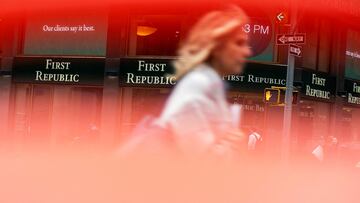What happens to savings and deposits of more than $250,000 if First Republic Bank collapses?
The FDIC is expected to put First Republic Bank into receivership as time runs out for a rescue of the bank. What does the mean for unsecured deposits?

First Republic Bank is on the verge of being put into receivership by the Federal Deposit Insurance Corporation (FDIC). That is unless a last minute deal can be arranged for a shotgun wedding with another more sound financial institution.
The descent of the bank, that focuses on mostly high net worth individuals along with their businesses, has been developing over several weeks. It like, other regional banks, has been struggling as the Federal Reserve raises interest rates. Those troubles were compounded by the collapse of Silicon Valley Bank and Signature Bank in March.
However, the straw that broke the camel’s back, so to say, came on Monday when the bank reported its first quarterly earnings report. It showed that the financial institution had seen $100 billion in deposits withdrawn, or over half, during the first three months of the year. Its valuation, which started the week down nearly 90 percent from its peak in February, dropped to even further depths.
By the end of trading on Friday, its valuation was down another 78 percent from the start of the week. News of its impending collapse has sent its share sliding ever more into the red. So what will happen to unsecure deposits, those over $250,000, should the FDIC take over First Republic Bank?
What happens to savings and deposits of more than $250,000 if First Republic Bank collapses?
When Silicon Valley Bank and Signature Bank collapsed in March, the federal government stepped in to guarantee all deposits that were over the secured amount of $250,000. The emergency measures put in place were taken to backstop the whole of the US banking system to avoid further runs on smaller financial institutions.
Those two banks imploded with incredible speed over the course of less than two days. And although they didn’t present a systemic risk, authorities feared that they could cause wider contagion, and further bank runs.
Will the government do the same for First Republic depositors? That has yet to be seen as the situation evolves. However, in this particular case, according to some back of the envelop calculations by John Foley, co-founder of Peloton, the FDIC would have roughly $195 billion to cover depositors and creditors.
That values the bank’s assets, which were $230 billion at the end of March, at 85 percent of face value. $55 billion could be used to cover insured depositors and $105 to cover priority creditors. The remaining $35 billion however, would not be enough to cover the $50 billion in uninsured deposits, those over $250,000.
The bulk though of those depositors are other banks, who would see a haircut. First Republic saw $30 billion deposited in the bank by four of the largest banks, Bank of America, Citigroup, JPMorgan and Wells Fargo, in mid-March to bolster the institution. They along with others with money above the insured amount would get a portion of what they had in the bank returned to them, but that amount would depend on the final price that the FDIC can get for First Republic’s assets once in receivership.






